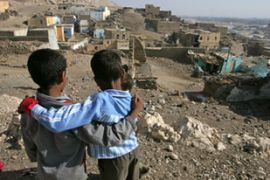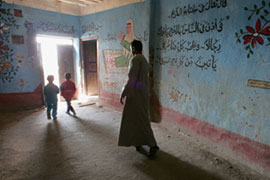Egyptians evicted to unearth tombs
The homes of more than 3,000 families are destroyed to uncover Pharaonic tombs.

Demolition started
It took only 15 minutes for the first three long-abandoned houses to be destroyed. As the demolition began, one resident cursed from his roof.
In contrast with a similar resettlement operation 10 years ago, which left four people dead, the eviction on Saturday proceeded without serious incident.
 |
| The brightly coloured homes in al-Qurna have become tourist attractions in their own right |
Negotiations between the government and the residents, many of whom depend on Luxor’s tourist industry, repeatedly failed in the past.
Now residents will be given either new homes or plots of land in a complex that will include schools and a police station, market and cultural centre.
“Yes we are sad, and what we’ve been offered is too far away, too expensive, we are very poor,” Mohammed al-Konsil, a local shopkeeper, said.
Nadia Mohammad Qassem, who is still unsure of when she and her family will move, said: “We are happy, but at the same time we are not happy, because we leave the best place here.”
The Egyptian government has not set a deadline for when the residents must leave or said when the new complex will be completed.
Archaeological importance
The arrival of European antiquity hunters in the late 18th and early 19th centuries originally encouraged Egyptians to move into the Theban hills where they were employed to help excavate, and loot, artefacts.
The homes are near the Valley of the Kings and its well-preserved tombs that draw thousands of tourists to Luxor every day.
Archaeologists have said that moving the residents is the best way to preserve the ancient necropolis under the town.
Zahi Hawass, Egypt’s head of antiquities, said: “The fact that archaeology is regaining its rights here is the dream of my life. Hidden treasures are there.”
But Hawass accused residents of pillaging artefacts to sell to tourists and said: “Terrible damage has been done to the tombs of Qurna.”
But Hassan Amer, an Egyptologist and Cairo University professor who was born in a tomb in a village south of al-Qurna, said: “They will turn [al-Qurna] into a city of the dead without caring much for the living and their history.”